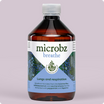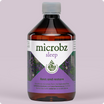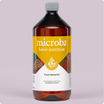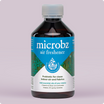Hops
Humulus lupulus

Family: Cannabaceae
Which probiotic is it in?: Hops is a key herb in Sleep
Habit and cultivation: Hops are native to the UK. It is the sole representative of its genus in these islands. Cultivated and naturalised in both Australia and New Zealand. Preferring sunny, open, rich moist soils, hops need extensive support during cultivation due to the length of the stems. Usually grown from cuttings of root stock when it first shoots in spring but can be propagated by seed. Frost resistant but drought tender.
Actions (known for): Sedative, hypnotic, anti-microbial, anti-spasmodic, astringent, diuretic, digestive bitter and anti-bacterial.
History of Hops
Parts used from the Hops
Flowers.
Constituents (bio available chemicals):
Bitter principle (15-20%) resinous and containing derivatives of phloroglucinol. On storage bitter acids convert at least in part to isovaleric acid. Volatile oil (0.3-1%). Flavonoids kaempferol and quercitin. Also contains tannins, phenolic acids, choline, trimethylamine, asparagine and undetermined oestrogenic substances.
Nutritional constituents:
Vitamin: B-complex. Minerals: magnesium, zinc, copper, and traces of iodine, sodium, lead, fluorine and chlorine.
Indications:
Colitis, excitability, insomnia, menopause symptoms and neuralgia.
Dosage:
Liquid extract (1:2): 10-30ml per week. Infusion of dried herb: 0.5-1g to aid sleep, or 3 x daily. Fresh hops can be placed on a pillow to aid sleep as their scent is carried by the olfactory nerve directly into the brain.
British Herbal Pharmacopoeia
Cautions for therapeutic doses
Can be interactive when consuming alcohol or other sedative drugs. May contribute to depression. Topically the pollen has been known to cause contact dermatitis and the fresh plant and plant dust has been known to cause allergic reactions.




































